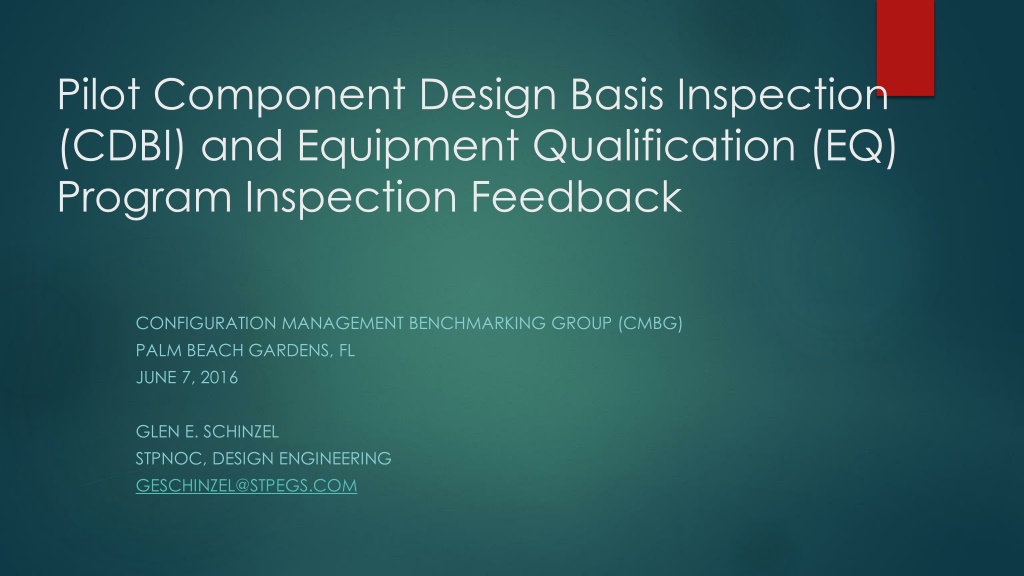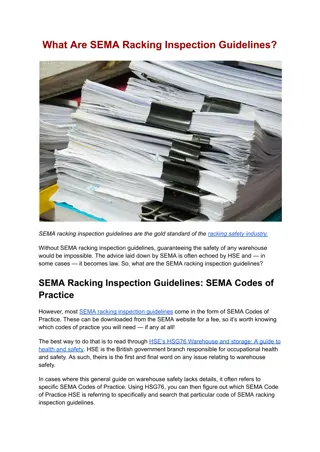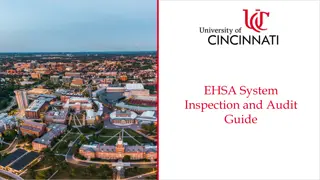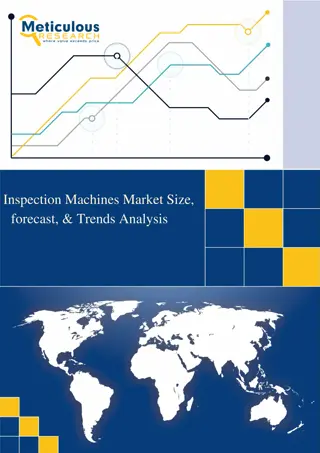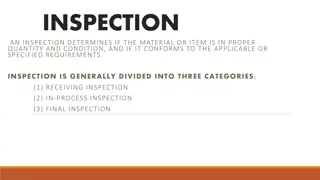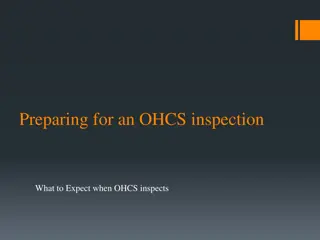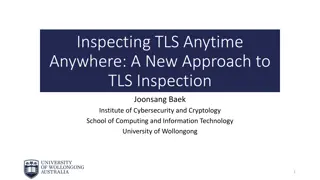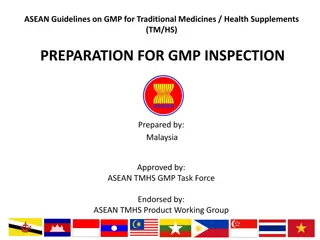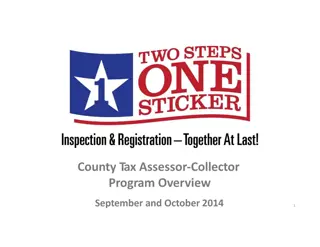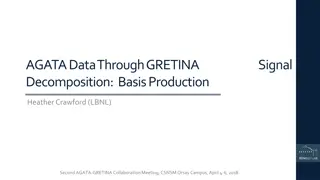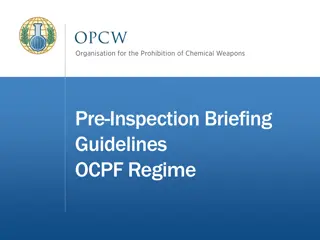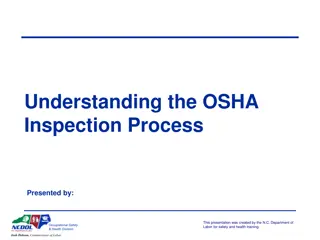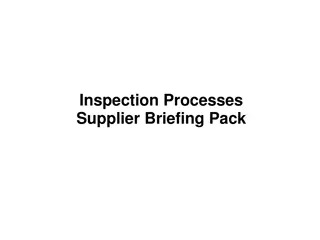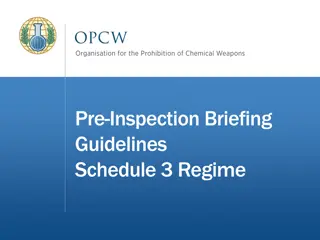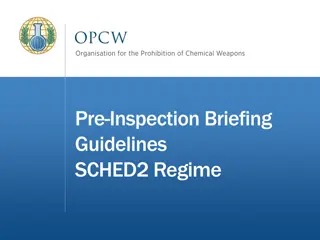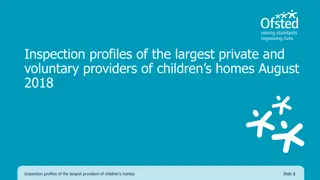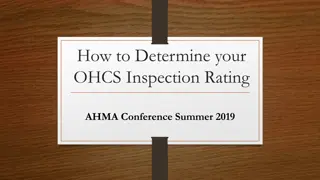Component Design Basis Inspection (CDBI) Program Overview
The Component Design Basis Inspection (CDBI) program ensures plant components are maintained within their design basis and monitors their capability to perform essential functions. Insights reveal the inspection frequency, estimated hours, fees, team composition, and inspection schedule. The baseline inspection is a crucial part of the NRC Regulatory Oversight Process. Industry and NRC collaborated to enhance the effectiveness of CDBIs due to concerns regarding cost and scope.
Download Presentation

Please find below an Image/Link to download the presentation.
The content on the website is provided AS IS for your information and personal use only. It may not be sold, licensed, or shared on other websites without obtaining consent from the author. Download presentation by click this link. If you encounter any issues during the download, it is possible that the publisher has removed the file from their server.
E N D
Presentation Transcript
Pilot Component Design Basis Inspection (CDBI) and Equipment Qualification (EQ) Program Inspection Feedback CONFIGURATION MANAGEMENT BENCHMARKING GROUP (CMBG) PALM BEACH GARDENS, FL JUNE 7, 2016 GLEN E. SCHINZEL STPNOC, DESIGN ENGINEERING GESCHINZEL@STPEGS.COM
CDBI Background Purpose of the NRC Component Design Basis Inspection (CDBI) is to: Verify that plant components are maintained within their design basis Monitor the capability of the selected components and operator actions to perform their design basis functions Inspection Scope Typically eleven to sixteen components are selected One to three components are typically associated with containment- related SSCs which are considered for Large Early Release Frequency, and Three to six components associated with issues identified through the operating experience feedback process
CDBI Insights The CDBI is a baseline inspection in the NRC Regulatory Oversight Process (ROP) The inspection is nominally performed on a triennial frequency The NRC previously estimated inspection hours at about: 475 hours (single unit sites) 500 hours (multi-unit sites) In actuality, many sites experienced many more hours of inspection NRC Inspection Fees Industry survey indicated NRC Inspection fees averaged $361,000 and ranged up to $500,000
CDBI Insights NRC inspection team is typically comprised of 6 inspectors (including contractors) Licensee costs for pre-inspection preparation, direct inspection support and post-inspection activities ranged up to $650,000 excluding contractor costs
Baseline CDBI Inspection Schedule (typical) Initial information requests On-site Visit (Bagman Trip) In-office preparations (2ndweek may be added) Week 1: Onsite inspection of selected samples Week 2: In-office inspection Week 3: Onsite inspection Week 4: In-office inspection Week 5: Onsite inspection Documentation/Report Development
Pilot Approach Beginning in 2014, industry and NRC engaged in dialog on how to improve the effectiveness of current CDBIs Due to industry concerns with the cost and scope of CDBIs, the Regulatory Issues Working Group (RIWG) along with the Nuclear Energy Institute (NEI) recommended changes to the CDBI program As a result of industry and NRC internal interest, a new CDBI pilot program (IP 71111.21T) was developed IP 71111.21 (Baseline) Components IP 71111.21T (Pilot) Components Components Containment SSCs 11 to 16 1 to 3 8 to 12 1 to 2 Operating Experience 3 to 6 1 to 3 Level of Effort 15 to 25 10 to 17
Pilot Approach CDBI Inspection Reduce the sample size and amount of inspection time on components Reduce the impact on licensees while still providing the inspection value 2 pilot inspections from each region Take lessons learned from the pilots and develop a revised CDBI inspection approach to be implemented at all licensee starting calendar year 2017 Added an engineering program inspection into the process Pilot inspection of the Equipment Qualification (EQ) program
Pilot CDBIs/Program Inspections Pilot inspections held at: NRC Region Plants I Calvert Cliffs CDBI and EQ Inspection Complete Fitzpatrick CDBI and EQ Inspection Complete II Browns Ferry CDBI and EQ Inspection Complete St. Lucie CDBI and EQ Inspection Complete III D.C. Cook CDBI and EQ Inspection Complete Dresden CDBI Complete; EQ Inspection on 06/20-24 IV South Texas Project CDBI and EQ Inspection Complete Columbia Generating Station EQ Inspection Complete; CDBI on 06/06-24
Pilot CDBI Inspections Initial information requests Onsite Visit Bagman Trip In-office preparations Week 1: Onsite inspection of selected samples Week 2: In-office inspection Week 3: Onsite inspection Documentation/Report development
Pilot EQ Program Inspections Initial information requests Onsite Visit Bagman Trip In-office preparations Onsite inspection of selected samples (one week) Documentation/Report development
STP Experience/Feedback Pilot CDBI scope mimicked the 5-week CDBI inspection scope Component scoping included some systems/sub-systems NRC information request was extensive and similar to past CDBI requests Additional information requests from NRC were provided late Inspection activities began on the first day of the Prep Week
STP Experience/Feedback Scope and rigor of the inspection was challenging Inspection activities continued during the Off Week More documented NRC requests than previous 5-week inspection Potential findings were communicated late in the process Inspection activities continued for several weeks post-Exit Initial exit was on 02/11; a telephone re-Exit occurred on 03/09
STP Experience/Feedback EQ Program Inspection: Initial information request mimicked or exceeded the CDBI initial information request EQ Bag Trip occurred during last week of the CDBI Some challenges with inspector knowledge of this new inspection scope
Industry Overall Experience/Feedback The overall industry pilot experience wasn t as bad as STP s General feedback is that the pilot approach shows promise: Reduced inspection footprint and the levelization of inspection scope provides benefit However, the aggregate impact of the design and program inspections has resulted in an increased burden on plant resources as compared to the original baseline CDBI Modest changes to the pilot approach can successfully address this concern
Industry Overall Experience/Feedback Overall positives: Adherence to inspection procedures and Team Lead performance Ability to complete deep dives into complex issues within the inspection timeframe Opportunities to improve: Sample size Sample selection Inspection focus area Data requests Inspection scheduling
Adjustments for Success Reduce CDBI sample size to 7-10 components Select samples at the component level; eliminate systems and groupings of components as a single sample Minimize re-inspection of components Refocus on licensee ability to maintain design and design margins over time (reduce focus on challenging the original design) Re-examine the need for extensive data requests Eliminate schedule overlap with CDBI and Program inspections
Next Steps Industry/NRC meeting was held on May 13 to discuss the to-date feedback Industry roll-up of pilot program results will occur in the June/July timeframe NRC pilot CDBI/Program review meeting scheduled for July 19
Going-Forward Actions NEI to create an industry focus group to pursue further changes to the CDBI process: Improve CDBI sample selection criteria Focus the CDBI on design control Streamline/focus document requests and data collection (Long-term consideration) Develop strategy to eliminate the triennial Fire Protection inspection by including fire risk components within the CDBI
